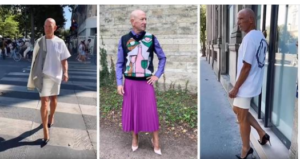
Mark Bryan is a robotics engineer who has been married for 11 years and has a daughter. He identifies as straight and chooses to dress unconventionally. Bryan is an American living in Germany, and he doesn’t believe that fashion has to be gendered. You can find Bryan wearing a skirt and heels to work or out anywhere else he goes on any given day.
Bryan said he doesn’t like how limited men’s choices are in the fashion department, especially when it comes to office attire. Men’s pants only come in a few colors, mostly black, gray, dark blue and the occasional pinstripe, and cuts.
The stylish dresser believes that if women are allowed to wear pants, men should be able to wear skirts and dresses as well. Bryan likes how skirts come in many styles and patterns – and many more colors – unlike men’s clothing.
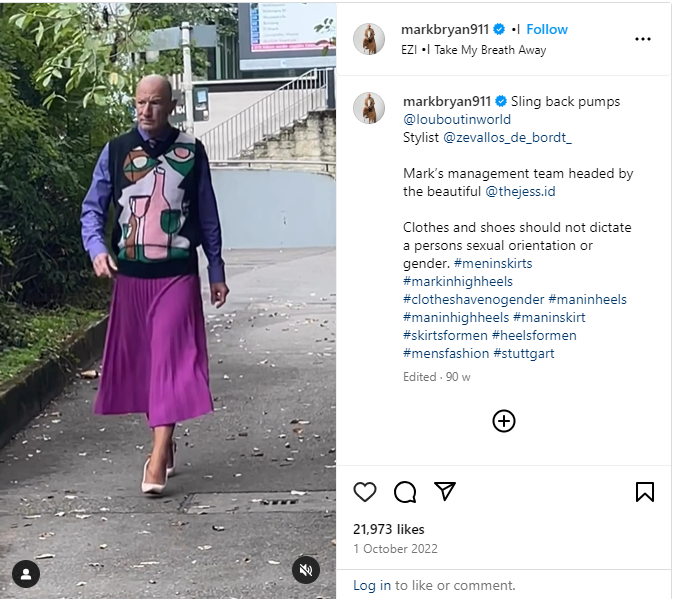
Bryan prefers to mix traditional gender looks by wearing masculine attire on his top half, like a blazer and tie, and traditionally feminine attire on the bottom half. He will typically wear a pencil skirt and four-inch heels on the bottom.
Wearing high heels is no problem for Bryan. He first learned how to do it when his college girlfriend asked him to wear high heels while dancing with her so that they were on the same level. They continued this for over a year.
Bryan doesn’t let stereotypes or assumptions stop him from dressing in a way that brings him joy. He challenges expectations and does so unapologetically. Keep reading to hear what Bryan has to say about his fashion choices.
Bryan has a very clear idea about how he likes to dress. He told Bored Panda: “To me, clothes have no gender. I prefer skirts to dresses. Dresses don’t allow me to mix the genders. I prefer a ‘masculine’ look above the waist and a non-gendered look below the waist. It’s all about clothes having no gender.”
He continued: “I am old enough to remember that in school, the girls could not wear pants. Pants have now become a non-gendered article of clothing. So why can’t skirts and heels be non-gendered? Besides, men wore heels before women did. Maybe not today’s stiletto-style heels, but men did wear heels before women.”
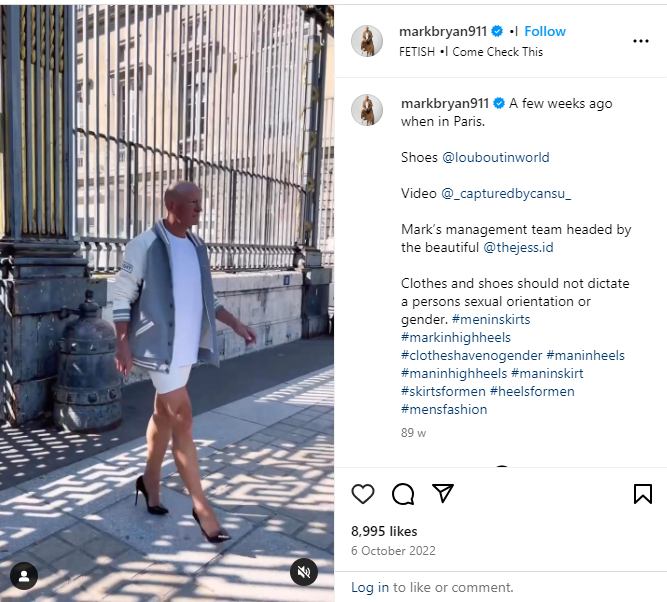
Bryan is correct about that. High heels can look back on a long history. Although historians and archaeologists cannot date their invention clearly, they have been around at least since the 10th century. And they were not a fashion statement at first. No, the first recorded use of high heels was eminently practical: the Persian cavalry wore boots with heels, called a kalash or galesh, that made it easier for them to keep their feet inside their stirrups. This is, by the way, the same reason why cowboy boots have a small heel as well!
Since owning a horse was a sign of wealth, only well-off men could afford to wear these high-heeled boots. The use of them slowly spread across Europe, and high heels heels became one of the fashion signs of rich noblemen or traders. In fact, following the Great Schism of the Christian Church in the 11th century, even the pope wore high heels.
It wasn’t until several hundred years later that fashion slowly changed. During the 18th century, cultural concerns in Europe came up about the distinction between males and females and talk about what men and women should wear arose. This is the point in time where the belief that fashion is something effeminate and frivolous that “real men” shouldn’t care about hails from. Due to these changing beliefs, men largely abandoned high heels heels, as they were seen as impractical and mere accessories.
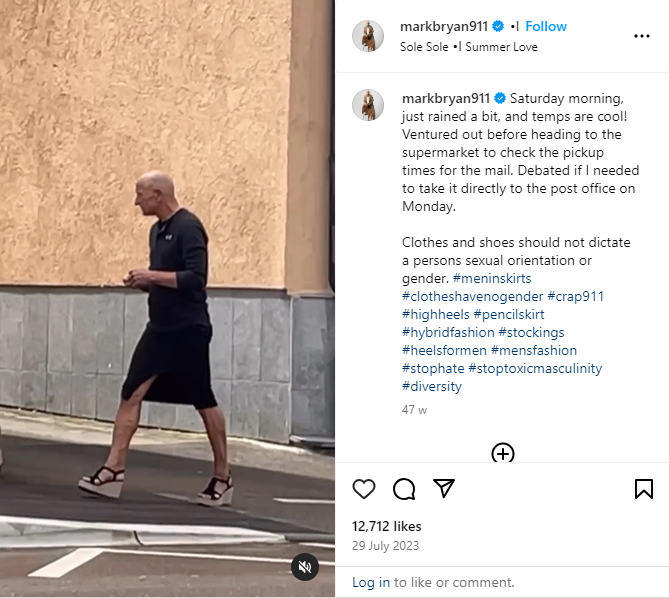
Bryan is one of the examples of how high-heels are slowly coming back as an accepted form of footwear for men. Although the engineer champions the option of wearing high-heeled shoes for men, he understands many people will look twice when they see him. He compares his style choices to someone who chooses to dye their hair bright colors. He explained:
“Take a person with bright green hair. Green hair is not normal. You look up and see this person, your mind tells you it’s a person with green hair, you think to yourself, that’s odd or interesting, then you go back to do what you were doing and don’t give it another thought. I believe this is the same when people see me in a skirt and heels.”
Bryan doesn’t have to struggle to find skirts and heels that fit him either. He wears a size 8 in skirts, and with smaller feet for a man, his shoe size in heels is 8.5. If you know a man who is considering trying out wearing heels and skirts too, Bryan suggests starting with a lower heel until you feel more comfortable walking in high heels.
What do you think of Mark Bryan’s style choices? Do you know any men who would try walking in high heels? Let us know, and be sure to send this along to your friends and family.
Natural Remedy for Skin Imperfections: Banana Peels and Baking Soda
Are you tired of dealing with skin imperfections like wrinkles, blemishes, melasma, moles, and warts? Look no further! We have a natural and effective solution for you that’s easy to use and utilizes the unique properties of banana peels and baking soda to help improve your skin’s appearance.
Why Banana Peels and Baking Soda?
Banana Peels: These peels are not just food waste! They are packed with antioxidants, vitamins, and minerals that can nourish and revitalize your skin. Banana peels contain lutein, an antioxidant that reduces inflammation and enhances skin elasticity, helping to minimize wrinkles.
Baking Soda: Known for its exfoliating properties, baking soda gently removes dead skin cells and promotes new cell growth. This helps reduce the appearance of blemishes and other skin imperfections.
How to Use Banana Peels and Baking Soda for Skin Care
Ingredients:
- 1 ripe banana peel
- 1 tablespoon of baking soda
Instructions: Prepare the Mixture
- Scrape the inner white part of the banana peel with a spoon and collect about 2 tablespoons of the material.
- In a small bowl, mix the banana peel paste with the baking soda until a smooth paste forms.
Application
- Thoroughly clean and dry the area of skin where you intend to apply the mixture.
- Apply the paste directly to the areas affected by wrinkles, blemishes, melasma, moles, or warts.
- Leave the mixture on for about 15-20 minutes.
Rinse Off
- Wash off the paste with lukewarm water. Be gentle to your skin while washing to avoid any irritation.
Moisturize
- After drying your skin, apply a gentle moisturizer to keep your skin hydrated and protected.
Tips for Best Results
Frequency of Use: To see significant improvements, use this treatment two to three times a week. Consistent application is key!
Patch Test: Before applying the mixture broadly, always perform a patch test on a small area of skin, especially if you have sensitive skin.
Sun Protection: Protect your skin from the sun, especially after using this treatment, as the skin may be more sensitive to UV rays.
Precautions
- Remember that while natural remedies can be beneficial, they are not cures for medical conditions. If you have moles or warts, it’s important to have them checked by a healthcare provider before trying any home treatments.
- Baking soda can be drying and may irritate sensitive skin. If you experience any redness, itching, or discomfort, discontinue use and consult with a dermatologist.
This banana peel and baking soda remedy offers a simple, cost-effective way to improve your skin’s appearance naturally. Say goodbye to harsh chemical treatments and give this gentle alternative a try. Your skin will thank you!
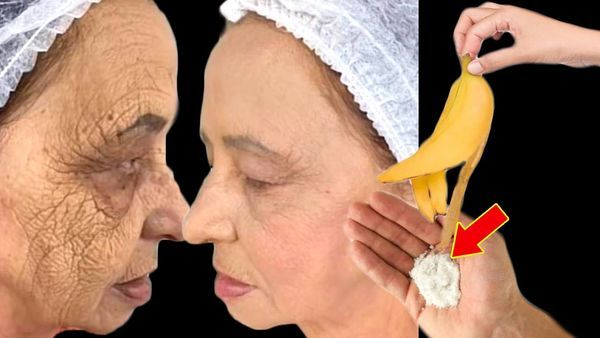



Leave a Reply